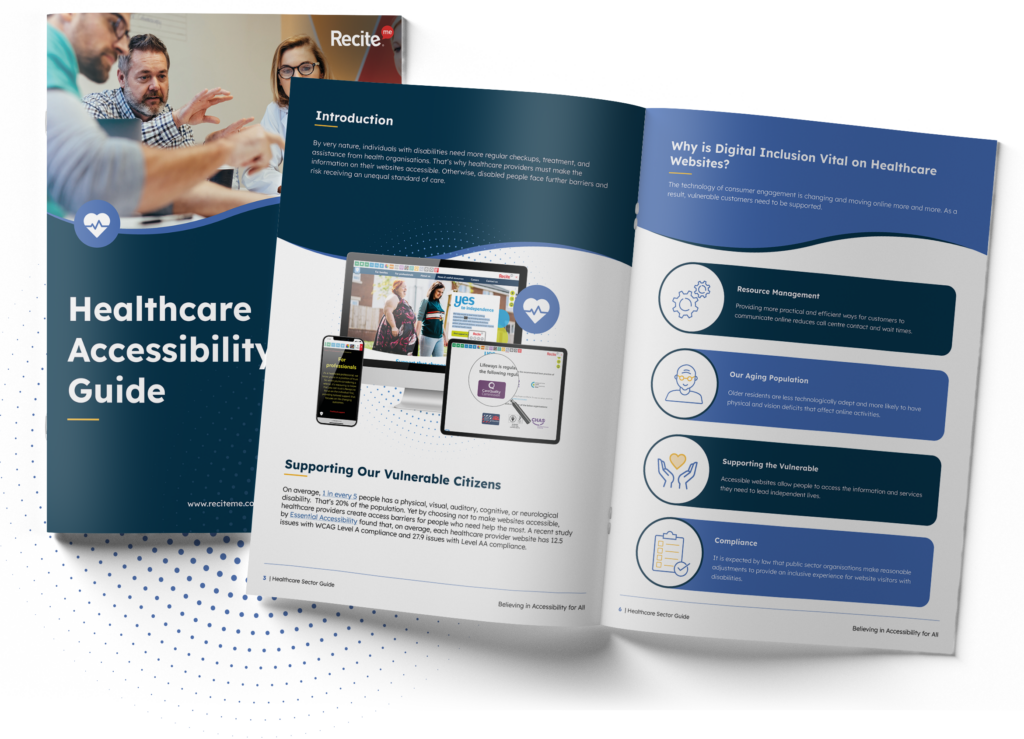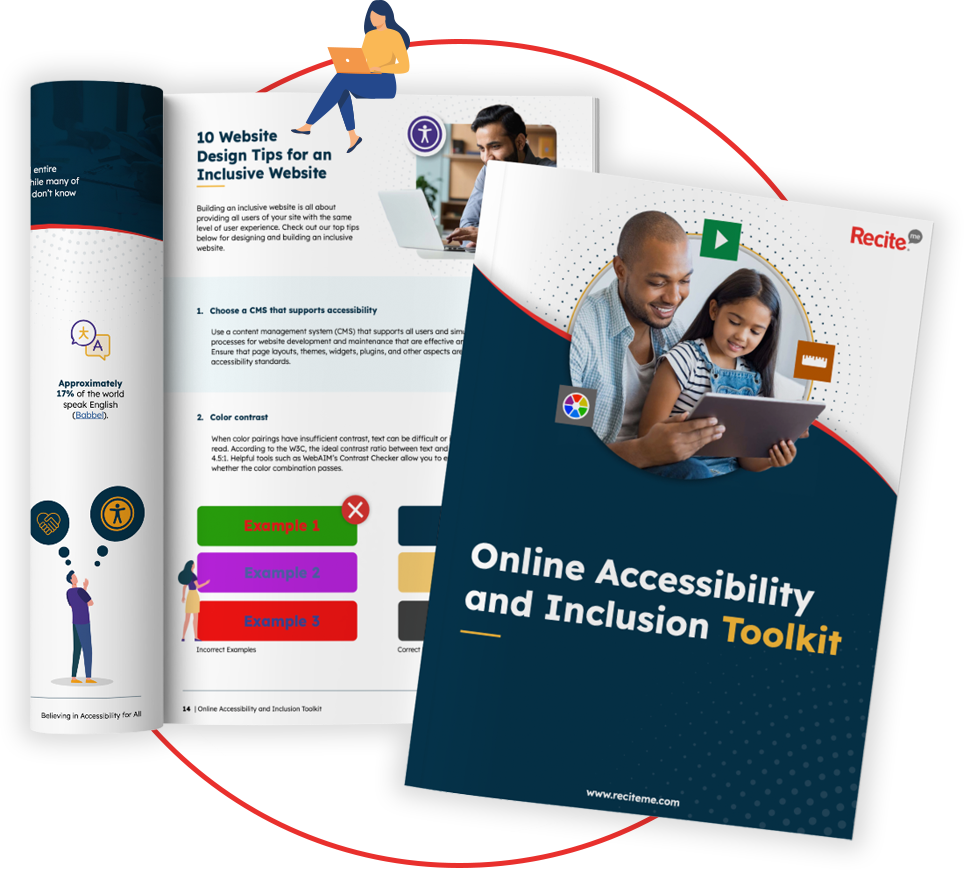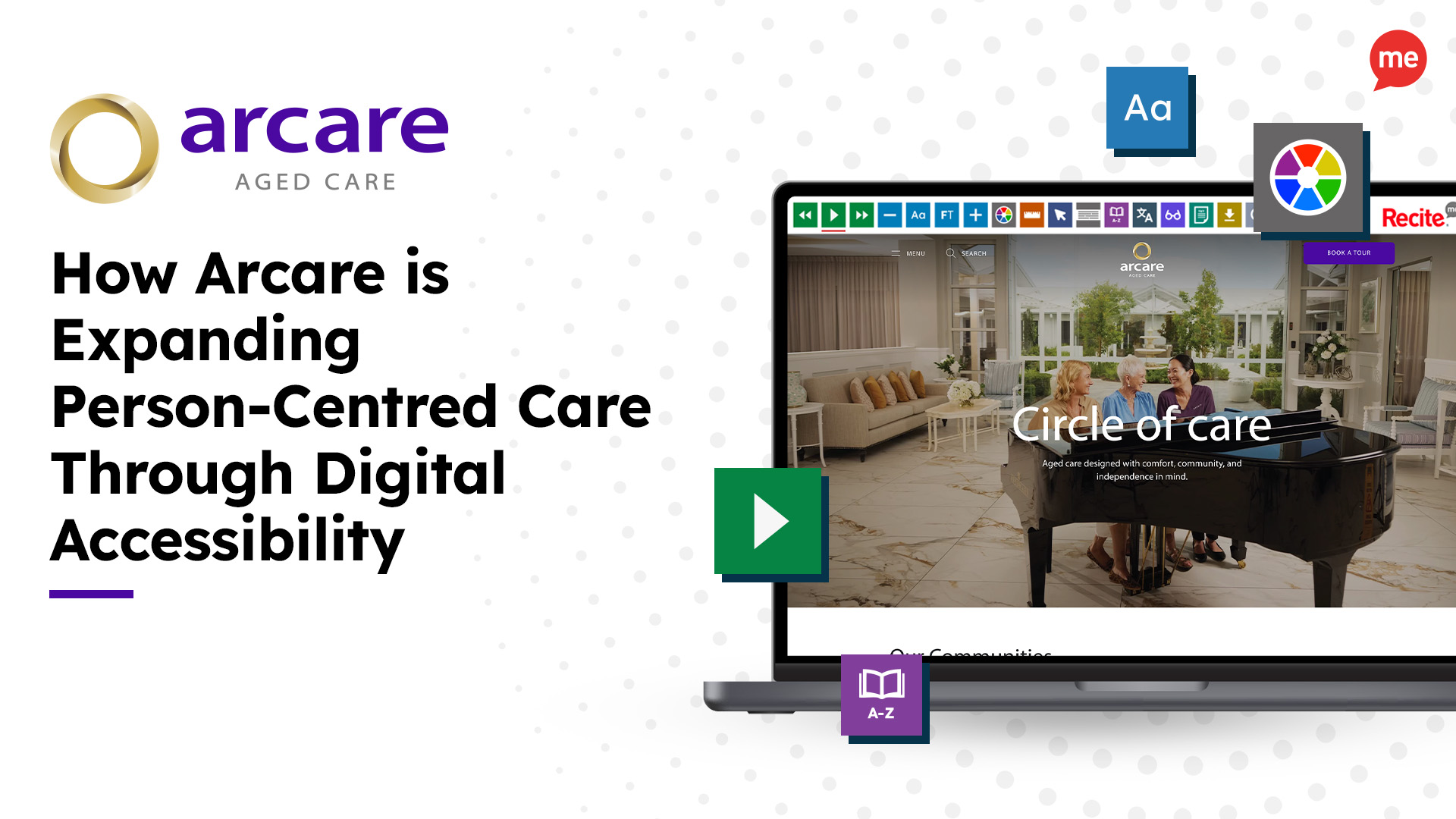Get Your Free Healthcare Accessibility Guide
Download NowDiversity and inclusion (D&I) are vital components of any modern healthcare system. By embracing these practices, healthcare providers can ensure that they cater to the needs of all individuals, regardless of their background or circumstances.
An equal, inclusive work environment provides healthcare staff with the tools they need to serve a diverse range of people. Likewise, an organisation that is set up to cater for a diverse range of patients is one that can serve a broader spectrum of the population. This article explores D&I strategies, their benefits, and the government regulations that surround them.
What is Diversity in Healthcare?
Our communities are diverse and that is what makes them brilliant. We welcome people of different race, gender, socioeconomic status, sexual orientation, immigration status, and more. Diversity in healthcare is all about ensuring that these communities are fairly represented among both healthcare providers and their patients.

For healthcare providers, this means granting disadvantaged groups fair access to employment within hospitals, clinics, and practices. It also means welcoming patients from a range of backgrounds so that everyone has sufficient access to healthcare facilities.
Ensuring diversity among healthcare staff is somewhat of a prerequisite to achieving diversity among patients – the two go hand in hand. This is because it takes a diverse workforce to understand the needs of, and care for, a diverse population.
Applying good diversity practices across healthcare is one of the keys to providing a bare minimum of social security, and contributes significantly towards a happier, healthier society.
What is Inclusion in Healthcare?
Inclusion in healthcare stems from diversity. Once providing healthcare staff and patients with access to hospitals, clinics, and the likes, the next step is to cultivate a supportive environment where all individuals feel respected, valued, and able to contribute fully. This is inclusion.
Inclusion practices involve cultivating an environment where the diverse perspectives and needs of both patients and healthcare workers are acknowledged and addressed. This might mean building a wheelchair ramp to accommodate for physical disabilities, providing culturally competent care, or implementing policies that ensure the safeguarding of any group against discrimination.
By fostering an inclusive environment, healthcare providers can improve patient satisfaction, staff morale, and overall quality of care.
Download our inclusive healthcare guide which looks at why digital barriers are a problem, who needs support, the importance of inclusive education, Recite Me clients, and an overview of our data from the past year.

Why is D&I Important in Healthcare?
The application of diversity and inclusion practices is crucial to the provision of good quality healthcare. And given how central healthcare is to modern day societies, this means D&I practices carry serious weight when it comes to affecting societal change.
In healthcare, good diversity and inclusion ensures that all patients receive high-quality care that is tailored to their individual needs. This is because D&I practices involve things like cultural competency training; a type of training that is focussed around understanding traditional health beliefs, cultural dietary practices, and social determinants of health that affect specific communities. Equipped with such knowledge, hospital staff are able to provide tailored care for their diverse patient population, the benefits of which transcend the individual and extend to society as a whole.
D&I practices also promote a fair and equitable work environment for healthcare professionals, which is essential for job satisfaction and thus staff retention. As a result, providers can invest more in their staff with the knowledge that they will stay longer, leading to even greater job satisfaction, and thus even more investment. On a societal level, this contributes not only to maintaining good levels of employment, but helps address the skills shortages that are so often prevalent within the healthcare sector.
When healthcare providers apply diversity and inclusion practices, they are more likely to understand the unique challenges faced by different patient groups. Cultivating this level of understanding amongst practitioners is central to improved patient outcomes. Additionally, a diverse and inclusive workforce invites a wider range of perspectives and ideas to be put forward, fostering innovation and high-level problem-solving in what is considered a nationally significant sector.
Strategies for Improving Diversity and Inclusion in Healthcare Services
Improving diversity and inclusion in healthcare requires a comprehensive and proactive approach. This section outlines some key strategies that healthcare providers can implement.

Recruit and Retain a Diverse Workforce
Actively recruiting and retaining a diverse workforce involves implementing inclusive hiring practices, offering mentorship programs, and providing career advancement opportunities for underrepresented groups.
One way to do this, for example, is to establish partnerships with minority-serving institutions in order to create internship programs that encourage students from diverse backgrounds to pursue careers in healthcare. This essentially provides a new channel for disadvantaged groups to enter the healthcare sector.
As the healthcare provider establishes themselves as a leader for D&I best practices this will only enhance their employer brand. Meaning individuals will seek the organisation out and want to work with them.
Provide Free Staff Training
Providing ongoing training for healthcare staff on things like cultural competency, unconscious bias, and inclusive practices is a great strategy for improving D&I within various healthcare services.
Such training equips employees with the skills and knowledge needed to provide specific care that is tailored towards certain groups. For instance, a clinic could conduct workshops where staff learn about the healthcare needs and cultural practices of different patient populations.
Implement Inclusive Policies
Developing and enforcing inclusive policies is one of the best strategies for ensuring a supportive environment for both staff and patients. Anti-discrimination policies could be implemented to prevent harassment or ensure equal employment opportunities for all. Similarly, flexible working arrangements could be offered to cater for the needs of single parents. Perhaps even a policy requiring all patient materials to be available in multiple languages could be offered, ensuring that non-English-speaking patients have access to the information they need.
The extent of inclusive policies that can be enacted is seemingly limitless. It just requires a bit of creativity and the will to cultivate an inclusive environment.
Build Accessible Online Resources and Websites
Accessible online resources and an inclusive website is critical for improving diversity and inclusion in healthcare services for both users and employees. It ensures that everyone can access all of the information available online regardless of their individual differences or physical disabilities.
Websites and online resources that are not accessible often prevent specific groups of people from accessing information. In a healthcare setting this could lead to serious consequences that affect the end users health. Tools such as the Recite Me Accessibility Checker and Assistive Toolbar can help improve the inclusivity of healthcare provider websites. The Checker helps to highlight inaccessibility and provide suggestions to rectify the issues. Whereas the Toolbar can be used to customize a website in a way that works for the user.

Engage With The Local Community
So much of providing high quality healthcare is dependent on the provider’s ability to understand the specific needs of the community it serves. After all, you need to have a comprehensive view of the problem if you are to address it effectively.
With that said, providers should engage with the communities in which they serve through advisory boards, surveys, or community meetings. For example, a healthcare provider might choose to set up a community advisory board composed of members from various cultural groups that are representative of the local community. The outcome of meetings held by the advisory board can then feed into the improvement of said provider’s healthcare services, helping them to address specific health concerns within the community.

Benefits of Healthcare Services with good D&I
Besides being the right thing to do, there are a wide range of benefits that stem from the application of diversity and inclusion practices in healthcare. This provides an excellent incentive structure for hospitals, clinics, and other organisations to begin improving their D&I. This section outlines some of the key reasons for implementing diversity and inclusion relating to both healthcare providers and their patients.
Benefits for Healthcare providers
- Enhanced Innovation and Problem Solving: With a diverse workforce comes a variety of unique ideas, perspectives, and skill sets. Naturally, this leads to better problem-solving, allowing healthcare providers to develop more creative and culturally sensitive solutions to things like health promotion campaigns or new treatment protocols.
- Improved Employee Satisfaction and Retention: Simply put, inclusive workplaces are nicer environments to work in. If employees feel valued and supported, they are more likely to stay with the organisation and perform at their best.
- Better Reputation and Trust: By engaging more with the local community, through health fairs and the likes, healthcare providers demonstrate their commitment to the people they serve. Inevitably, this leads to increased patient loyalty, word-of-mouth referrals, and a better reputation overall.
- Regulatory Compliance: Adhering to diversity and inclusion regulations helps healthcare providers to avoid legal issues and penalties, whilst simultaneously demonstrating a commitment to ethical practices and social responsibility.
Benefits for Patients
- Improved Health Outcomes: When healthcare providers understand and address the unique needs of diverse patient populations, they can deliver more effective and personalised care. For example, a clinic serving a large number of patients with limited English proficiency might hire bilingual staff or provide translation services. By tailoring care in this way, patients are able to better understand their own diagnoses and therefore be more likely to adhere to their treatment plans, leading to improved health outcomes overall.
- Increased Patient Satisfaction: Part of providing an inclusive environment is making patients feel as though their needs are respected and understood. As long as this can be achieved, patient satisfaction will remain high.
- Reduced Health Disparities: Improved diversity and inclusion practices help healthcare providers to address social determinants of health and provide equitable care all round. This contributes significantly to the reduction of health disparities and improves access to care for underserved populations.
Our 40-page Digital Accessibility & Inclusion Toolkit helps businesses break down online barriers and make a real impact. It offers practical advice on all aspects of digital accessibility, from writing an accessibility statement to accessible website tips and inclusive hiring.

AUS Regulations for Diversity and Inclusion in Healthcare
Australia has a number of regulations that are designed to promote diversity and inclusion practices within healthcare. This section outlines some of those that are most relevant.
Health Practitioner Regulation National Law
Born out of this law is the Australian Health Practitioner Regulation Agency (AHPRA), which oversees the regulation of health practitioners in Australia. AHPRA promotes diversity and inclusion through guidelines and standards that healthcare practitioners are required to follow.
For example, AHPRA could mandate cultural competency training as part of the continuing professional development of healthcare practitioners, so that they are well-equipped to provide inclusive care for a diverse patient population.

Disability Discrimination Act
The Disability Discrimination Act (DDA) aims to eliminate discrimination against individuals with disabilities. In healthcare, the DDA mandates equal access to medical services and facilities. It requires healthcare providers to make reasonable adjustments, such as providing accessible communication methods and modifying physical environments to accommodate patients with disabilities.
The act also prohibits discriminatory practices in patient treatment and care, ensuring that all individuals receive equitable and respectful healthcare. By enforcing these provisions, the DDA helps create an inclusive healthcare system that recognises and addresses the diverse needs of people with disabilities.
National Aboriginal and Torres Strait Islander Health Plan
This plan focuses on improving the health and well-being of Aboriginal and Torres Strait Islander people. It emphasises the importance of things like culturally appropriate healthcare services and community engagement.
Compliance with this plan could take various forms. A culturally sensitive health program, for example, would likely require the employment of indigenous health workers. It may even involve offering health services in local community languages or incorporating traditional healing practices alongside conventional medical treatments.
How can Recite Me Help?
Recite Me is one of the leading providers of accessibility solutions, we are committed to making the digital world a more accessible and inclusive environment. As shown in this article, one of the best ways to improve your Diversity and Inclusion is by offering accessible online resources and making your website accessible to everyone.
At Recite Me we use a range of product to make this possible and already partner with some of the leading Healthcare providers including the likes of the NHS and Lifeways.

Accessibility Toolbar
Our Accessibility Toolbar is our longest standing product, it works by integrating with the healthcare providers website. Once integrated, the toolbar can be used for a variety of different functions, mainly allowing the user to customise the website to suit their needs and preferences. Some of the Toolbars main features include:
- Personalise font size, colour and type.
- Screen Mask & Ruler tools for reading.
- Download written content as an audio file.
- Text to speech.
- Translation to over 100 languages.
- Customising PDF documents.
Accessibility Checker
Our Recite Me Accessibility Checker is a tool that healthcare providers can use to highlight and fix inaccessible website design. The tool works by taking the URL of your website and performing a scan of the domain. The checker will then pull a report of accessibility issues into an actionable list, with suggestions and recommendations to help you resolve the issues. The step by step process of the checker is as follows:
- Step 1: Scan Your Domains
- Step 2: Identify Accessibility Issues
- Step 3: Fix Accessibility Errors
- Step 4: Track Your Progress
- Step 5: Download & Share and Accessibility Report




